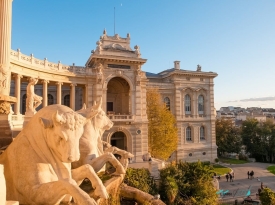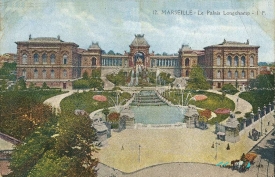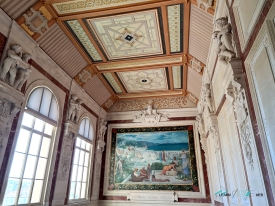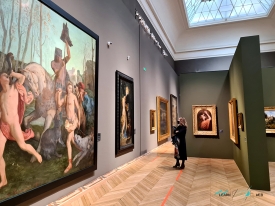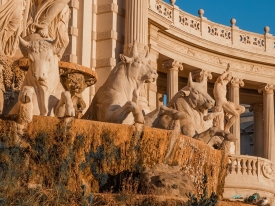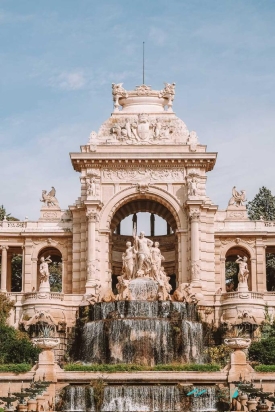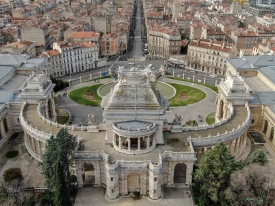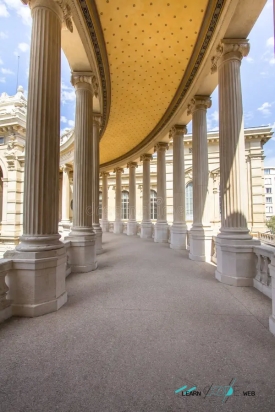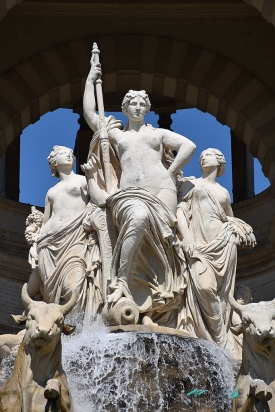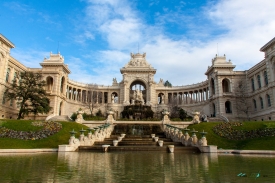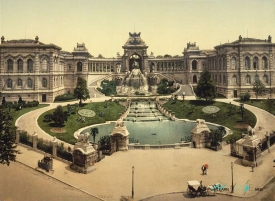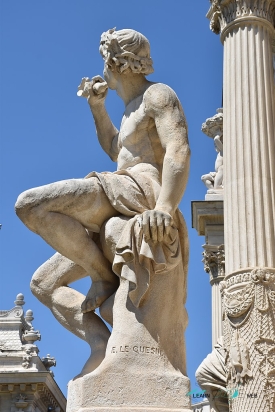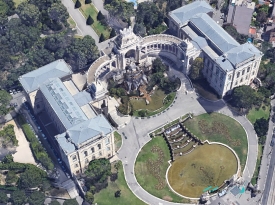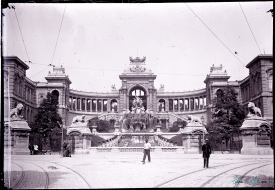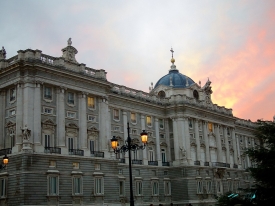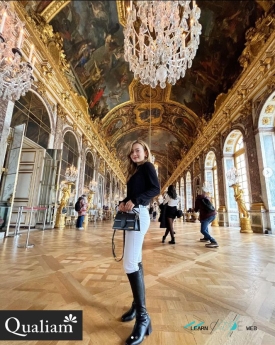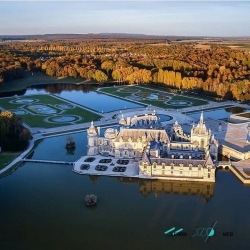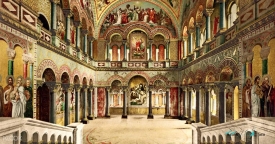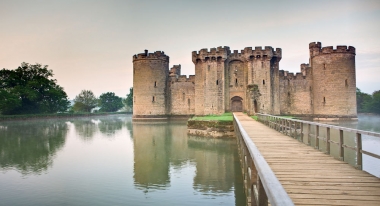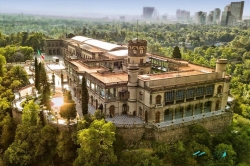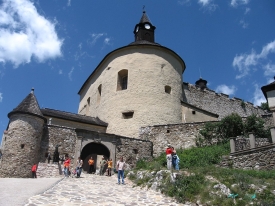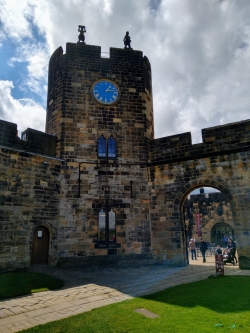ABOUT Palais Longchamp
Marseille, a vibrant port city in the south of France, is home to many architectural wonders that speak volumes of its rich history and cultural heritage. Among these, the Palais Longchamp stands out as a testament to human ingenuity and artistic prowess. This grand edifice is not just a palace; it's a symbol of Marseille's triumph over a historical challenge and a must-visit for any traveler exploring the region.
The story of Palais Longchamp begins in the 19th century, with a pressing issue that plagued Marseille: a dire shortage of water. The rapidly growing population and the lack of a reliable water source led to numerous health crises. The solution came in the form of the Durance River, located over 80 kilometers away. A monumental task was undertaken to construct the Canal de Marseille, a feat of engineering that would bring water to the parched city.
To celebrate the completion of this crucial project, the city decided to construct an equally impressive monument: the Palais Longchamp. Designed by the architect Henry Espérandieu, the palace was inaugurated in 1869. It was not just a celebration of the canal's completion but also a tribute to the river Durance, which had breathed life back into Marseille.
As you approach the palace, you're greeted by the imposing water tower, crowned with a sculpture of the river god Durance. The cascade flowing down from the tower is adorned with statues representing wheat and grape harvests, symbolizing the prosperity that the water brought to the region.
The museums within the palace are treasure troves of art and natural history. The Musée des Beaux-Arts boasts a collection of European paintings from the 16th to the 19th centuries, including works by artists like Rubens, Courbet, and Puget. The Natural History Museum offers a fascinating glimpse into the biodiversity of the region, with exhibits ranging from prehistoric fossils to current wildlife.
The surrounding park, known as Parc Longchamp, is a beautiful green space perfect for a leisurely stroll or a picnic. With its lush gardens, majestic fountains, and serene ambiance, it's an ideal spot to unwind after exploring the palace.
The Palais Longchamp is more than just a historical monument; it's a journey through time, art, and the triumph of human will. Whether you're an art enthusiast, a history buff, or simply looking for a picturesque spot to relax, this architectural gem in the heart of Marseille is sure to captivate your senses. Don't miss the opportunity to experience the splendor of the Palais Longchamp on your next visit to Marseille.
The story of Palais Longchamp begins in the 19th century, with a pressing issue that plagued Marseille: a dire shortage of water. The rapidly growing population and the lack of a reliable water source led to numerous health crises. The solution came in the form of the Durance River, located over 80 kilometers away. A monumental task was undertaken to construct the Canal de Marseille, a feat of engineering that would bring water to the parched city.
To celebrate the completion of this crucial project, the city decided to construct an equally impressive monument: the Palais Longchamp. Designed by the architect Henry Espérandieu, the palace was inaugurated in 1869. It was not just a celebration of the canal's completion but also a tribute to the river Durance, which had breathed life back into Marseille.
A Fusion of Art and Architecture: Exploring the Palais Longchamp
The Palais Longchamp is a stunning example of Second Empire architecture, with its intricate details and grandiose design. The centerpiece of the complex is the majestic water tower, flanked by two wings that house the Musée des Beaux-Arts (Museum of Fine Arts) and the Natural History Museum.As you approach the palace, you're greeted by the imposing water tower, crowned with a sculpture of the river god Durance. The cascade flowing down from the tower is adorned with statues representing wheat and grape harvests, symbolizing the prosperity that the water brought to the region.
The museums within the palace are treasure troves of art and natural history. The Musée des Beaux-Arts boasts a collection of European paintings from the 16th to the 19th centuries, including works by artists like Rubens, Courbet, and Puget. The Natural History Museum offers a fascinating glimpse into the biodiversity of the region, with exhibits ranging from prehistoric fossils to current wildlife.
Visiting the Palais Longchamp: Practical Information
The Palais Longchamp is located in the 4th arrondissement of Marseille, easily accessible by public transportation. The closest metro station is Cinq Avenues Longchamp on Line 1. The palace is open to the public year-round, with the museums having varying opening hours. It's advisable to check the latest visiting information before planning your trip.The surrounding park, known as Parc Longchamp, is a beautiful green space perfect for a leisurely stroll or a picnic. With its lush gardens, majestic fountains, and serene ambiance, it's an ideal spot to unwind after exploring the palace.
The Palais Longchamp is more than just a historical monument; it's a journey through time, art, and the triumph of human will. Whether you're an art enthusiast, a history buff, or simply looking for a picturesque spot to relax, this architectural gem in the heart of Marseille is sure to captivate your senses. Don't miss the opportunity to experience the splendor of the Palais Longchamp on your next visit to Marseille.
The Best Pictures of Palais Longchamp
Videos of Palais Longchamp







![fontaine monumentale du parc longchamp esperandieu jules cavelier marseille x[] fontaine monumentale du parc longchamp esperandieu jules cavelier marseille x[]](https://www.aerialviews.org/photos/thumb/fontaine-monumentale-du-parc-longchamp-esperandieu-jules-cavelier-marseille-29-848x566[1].jpg)
